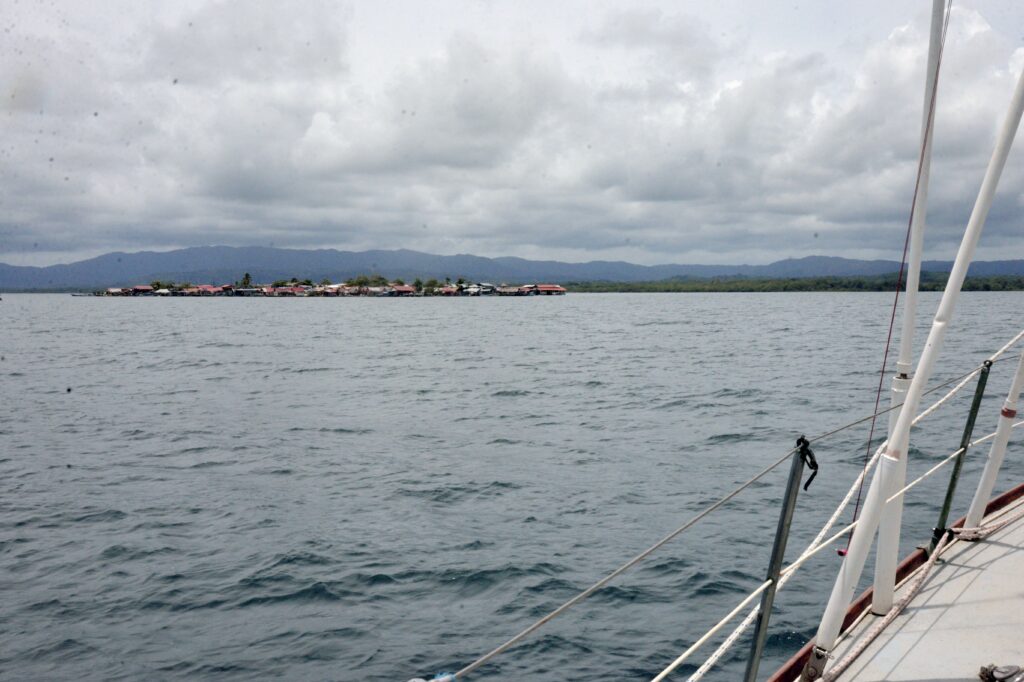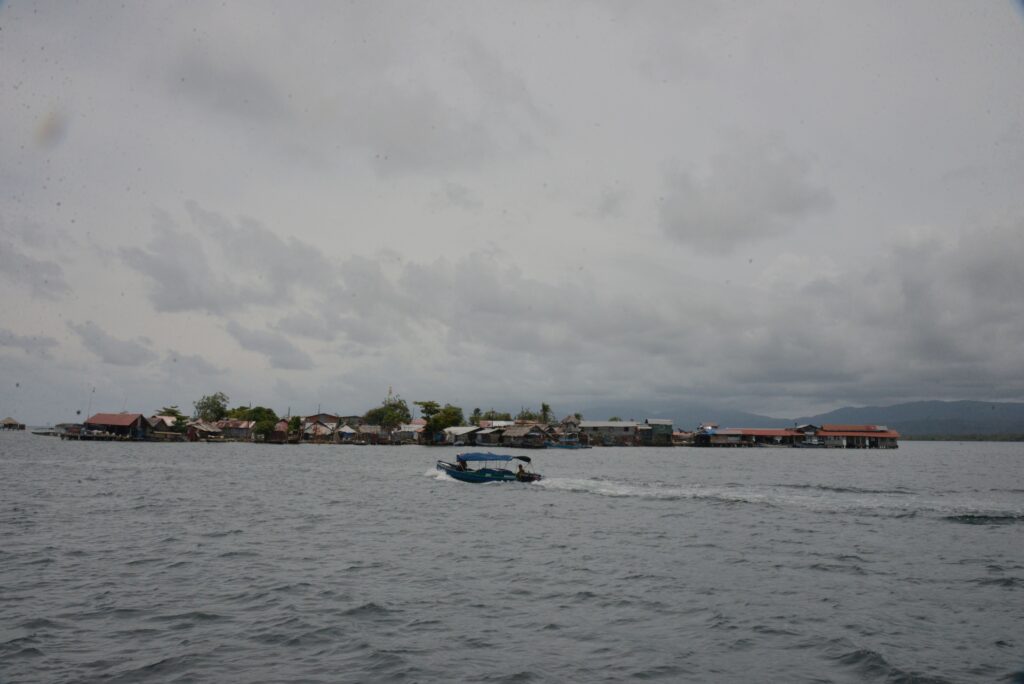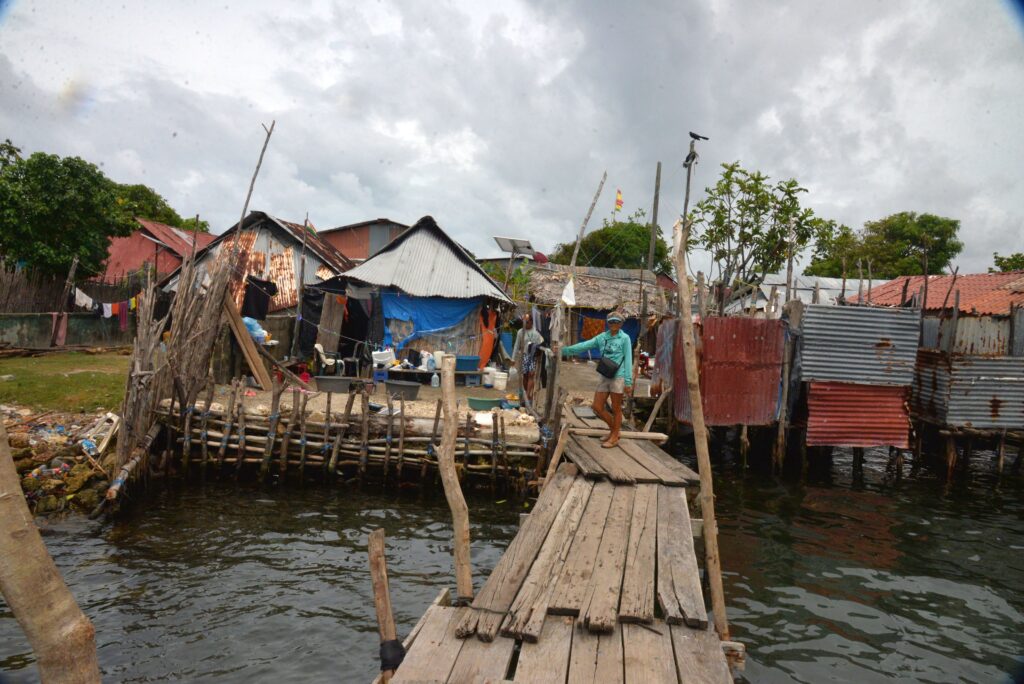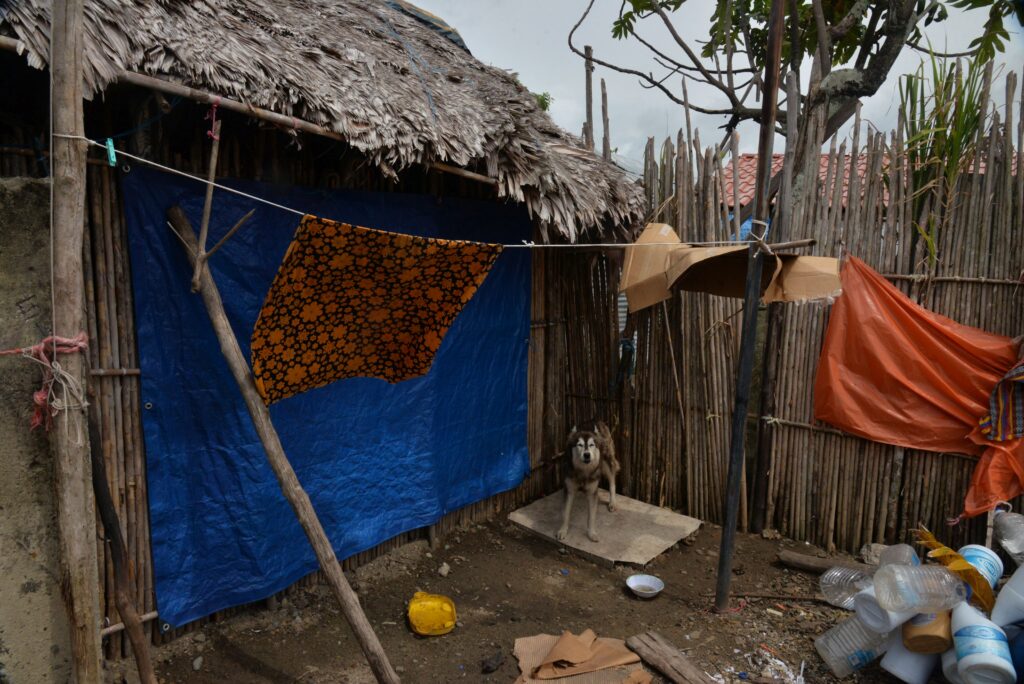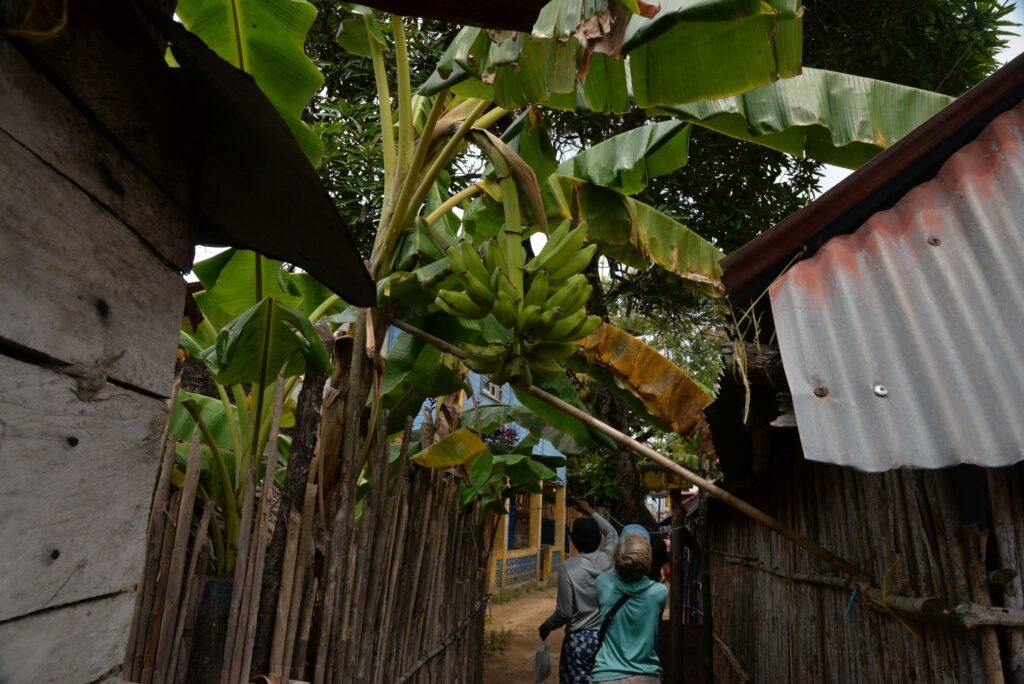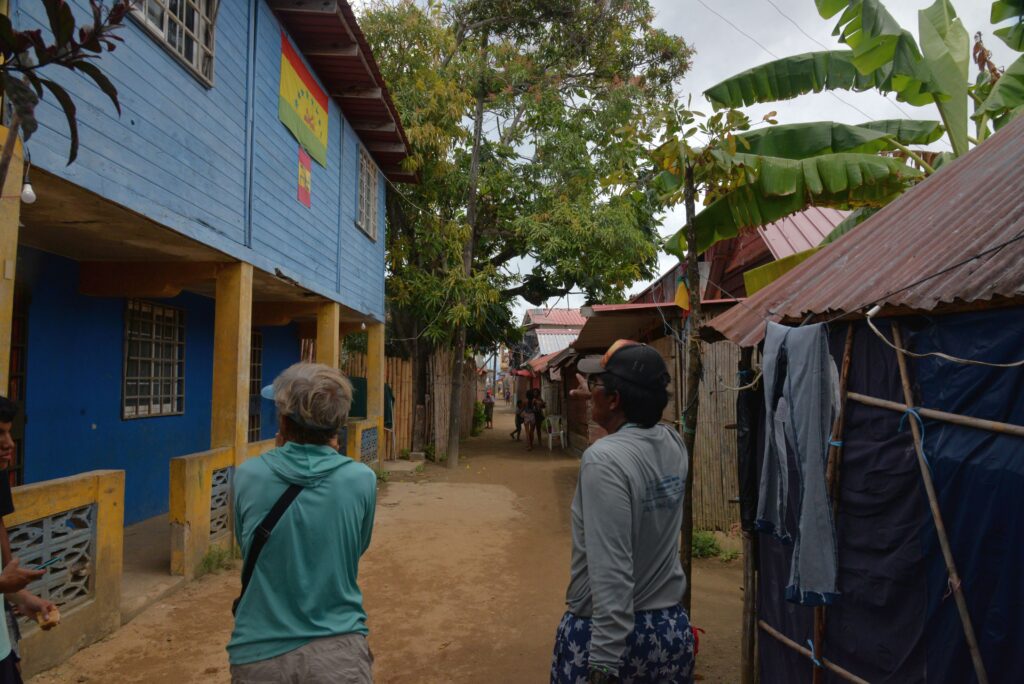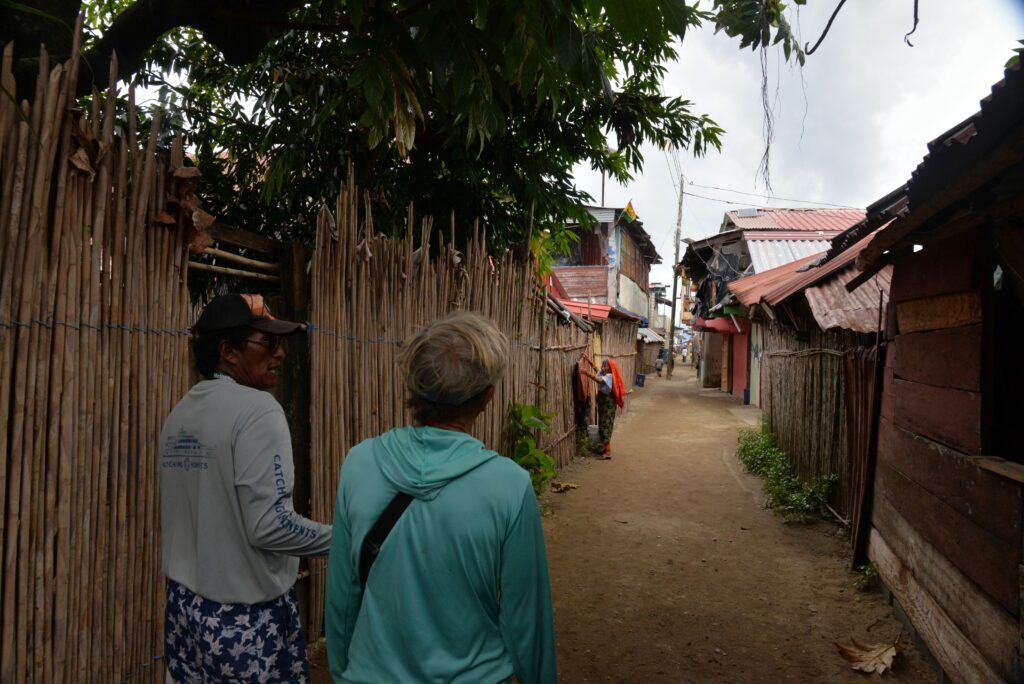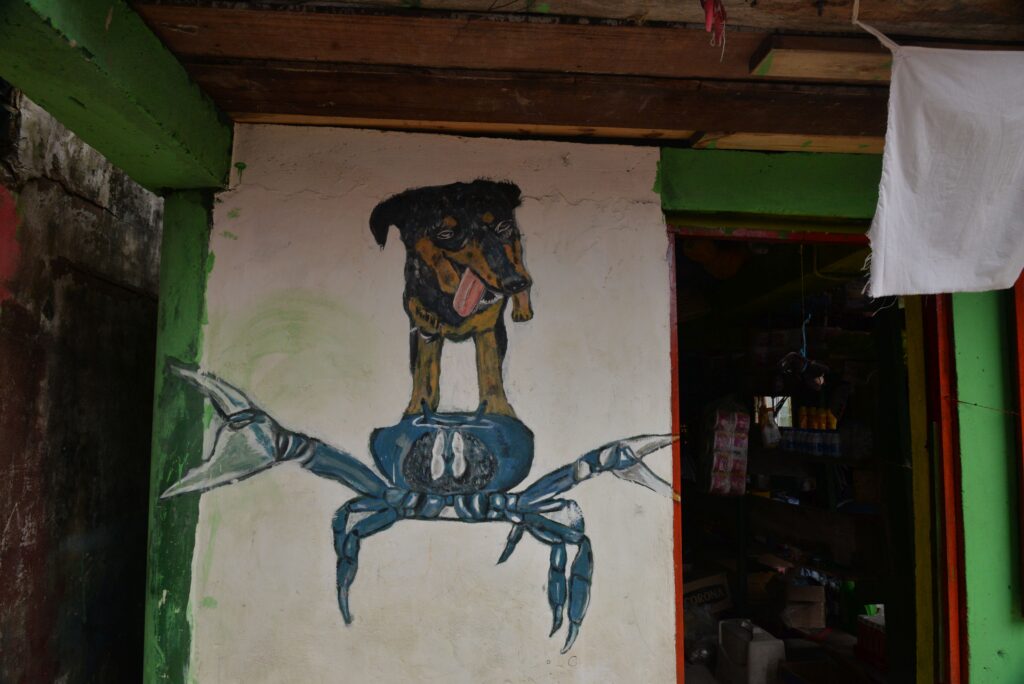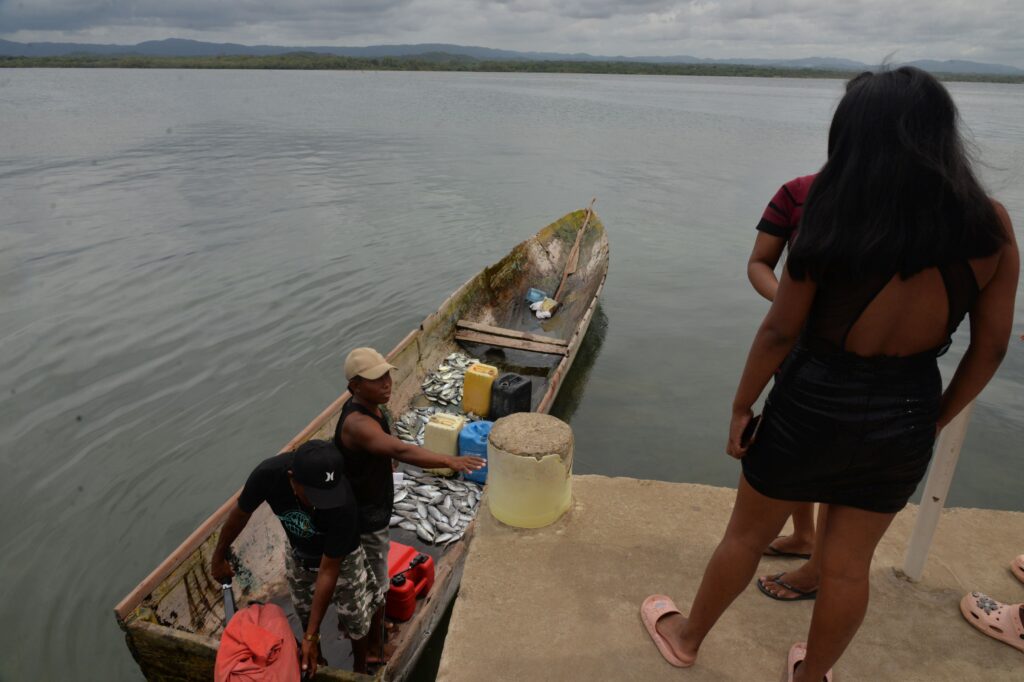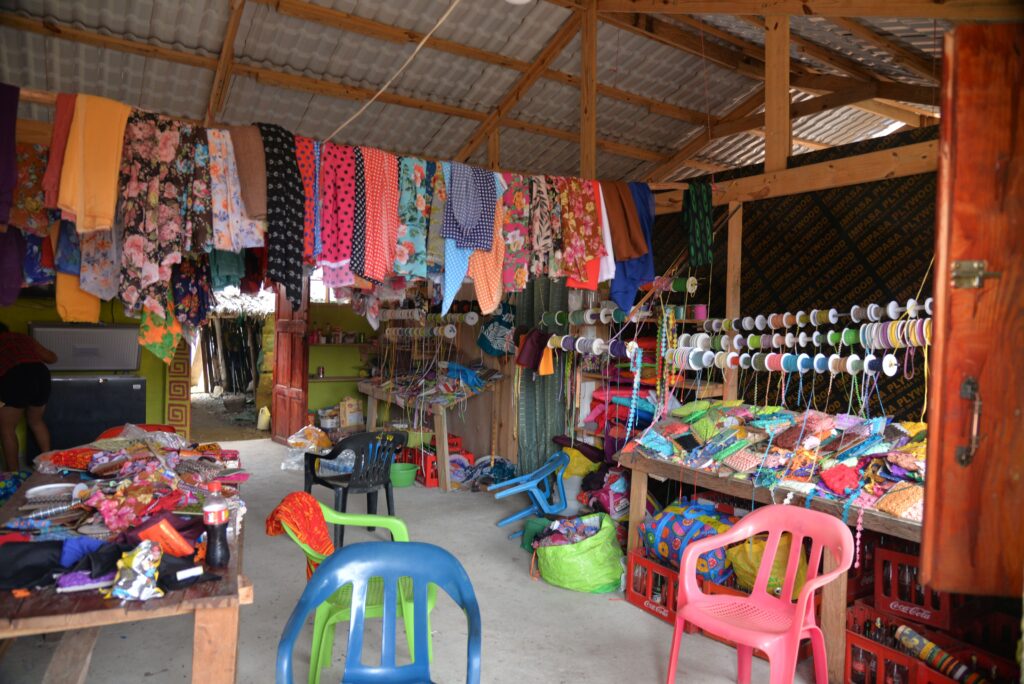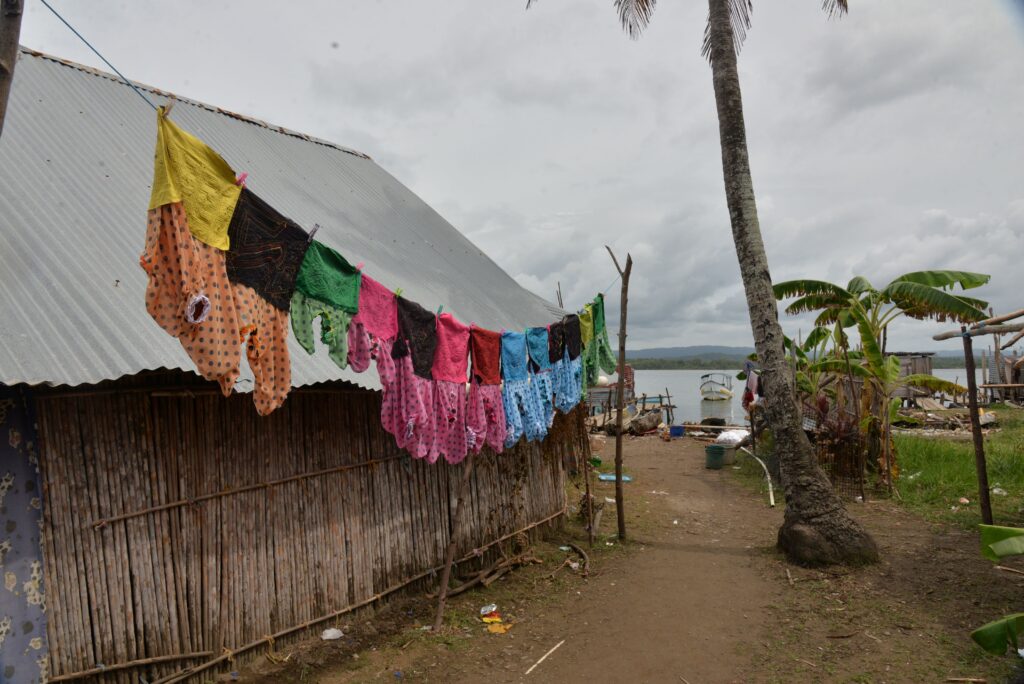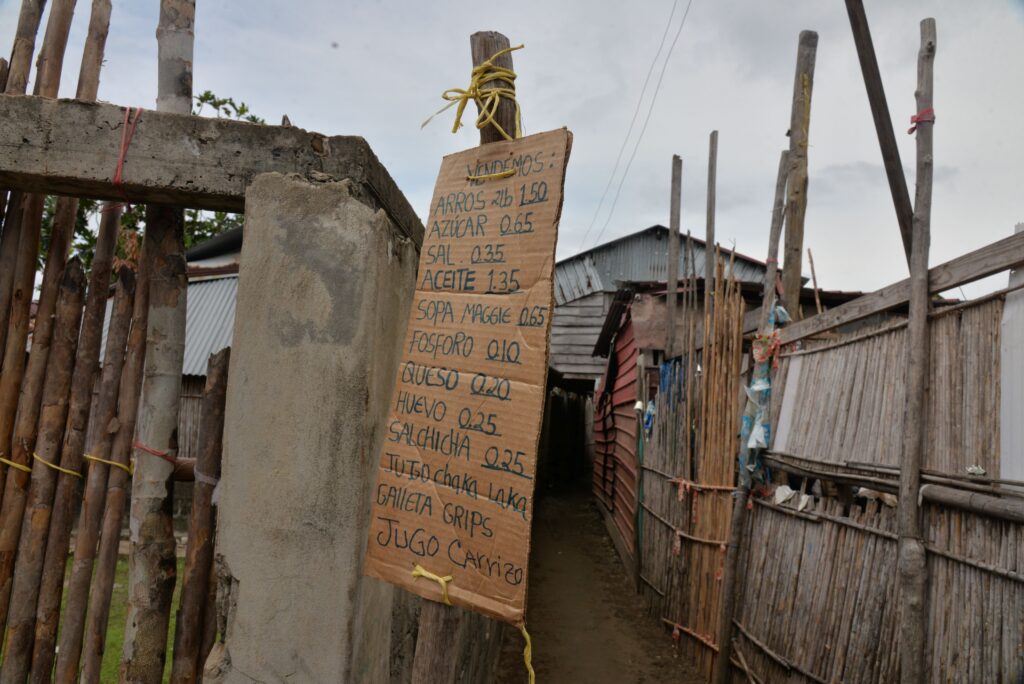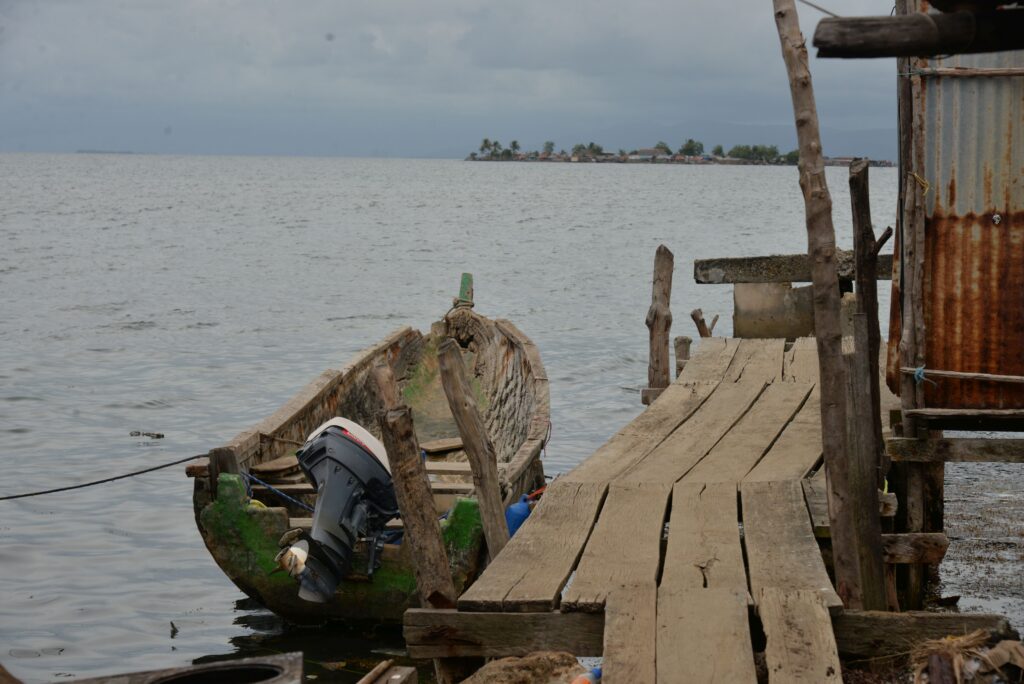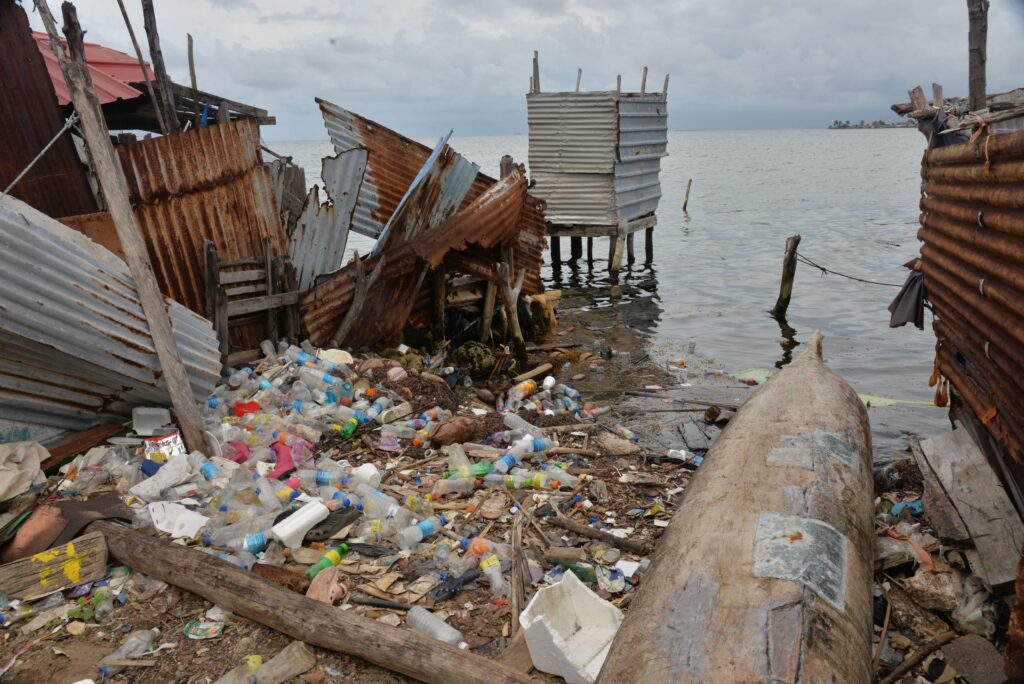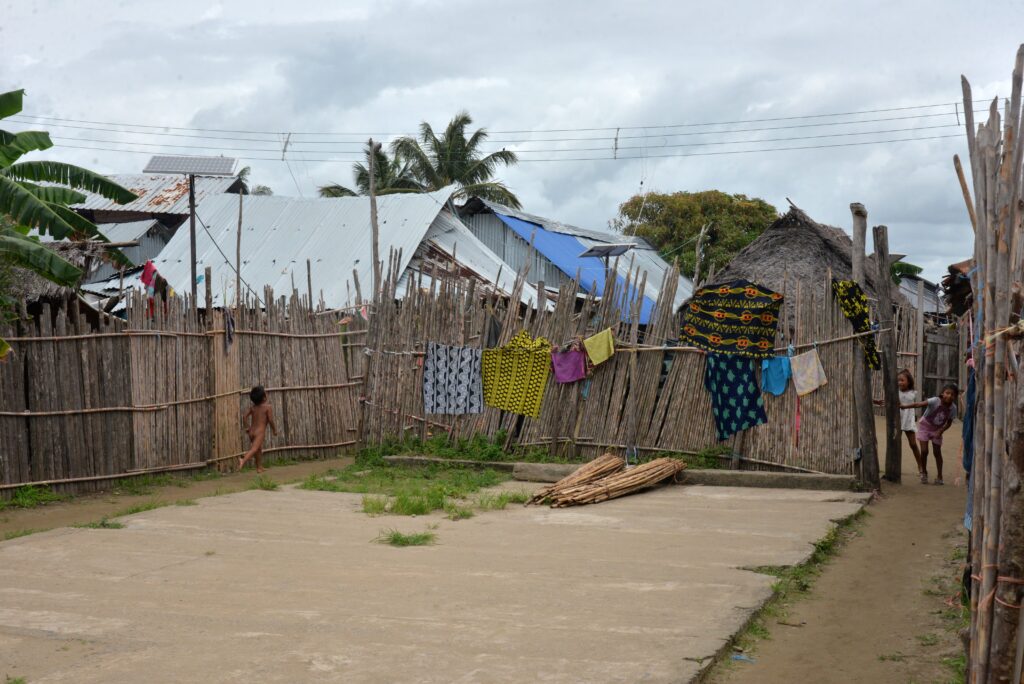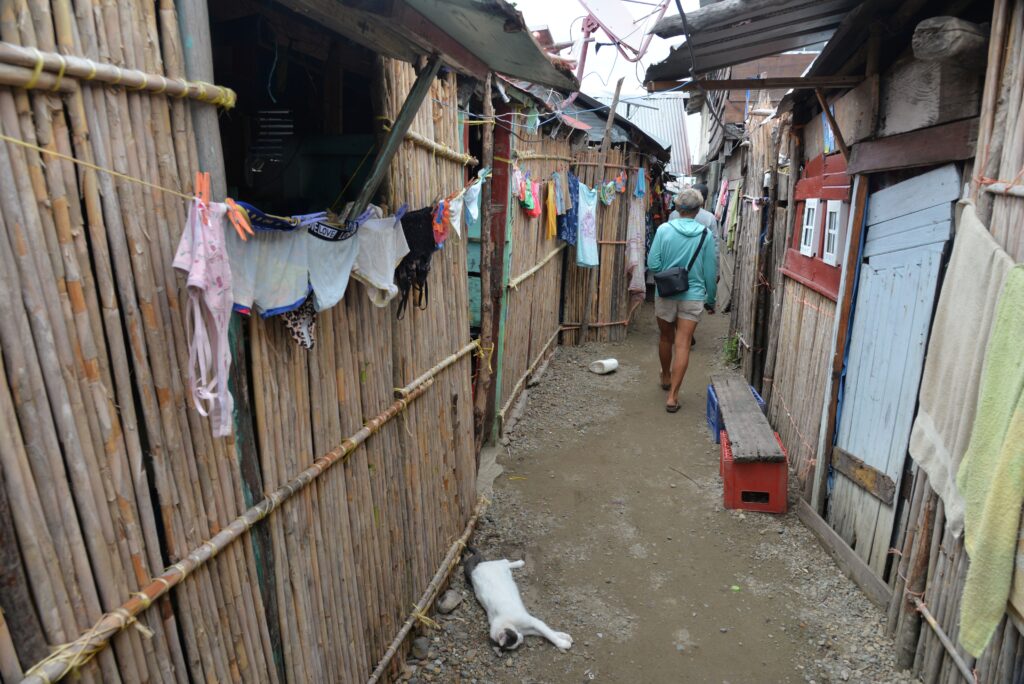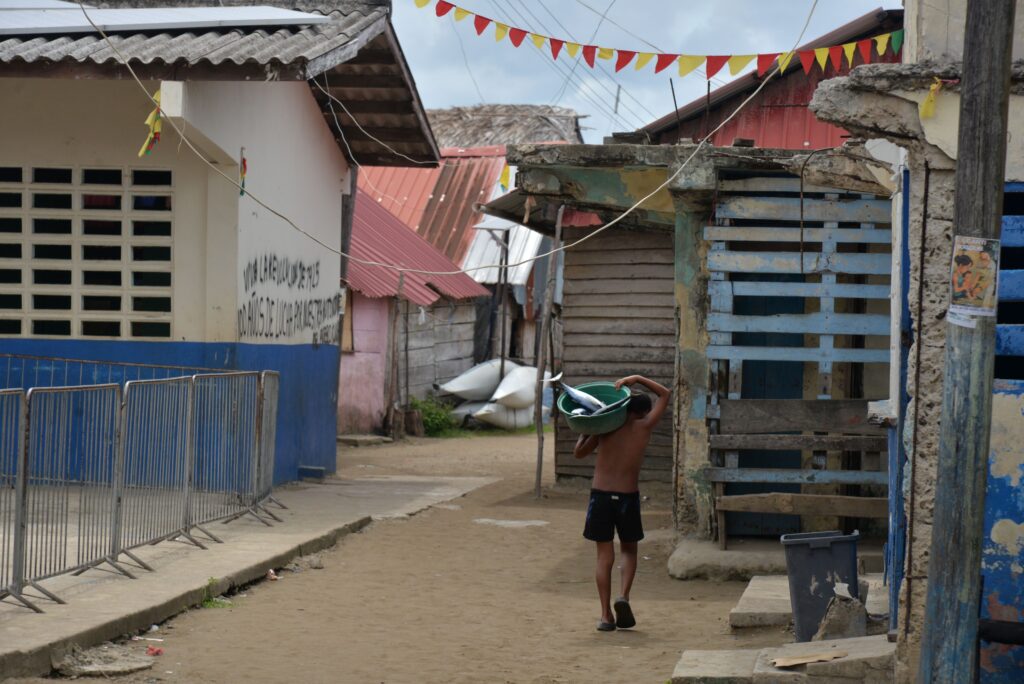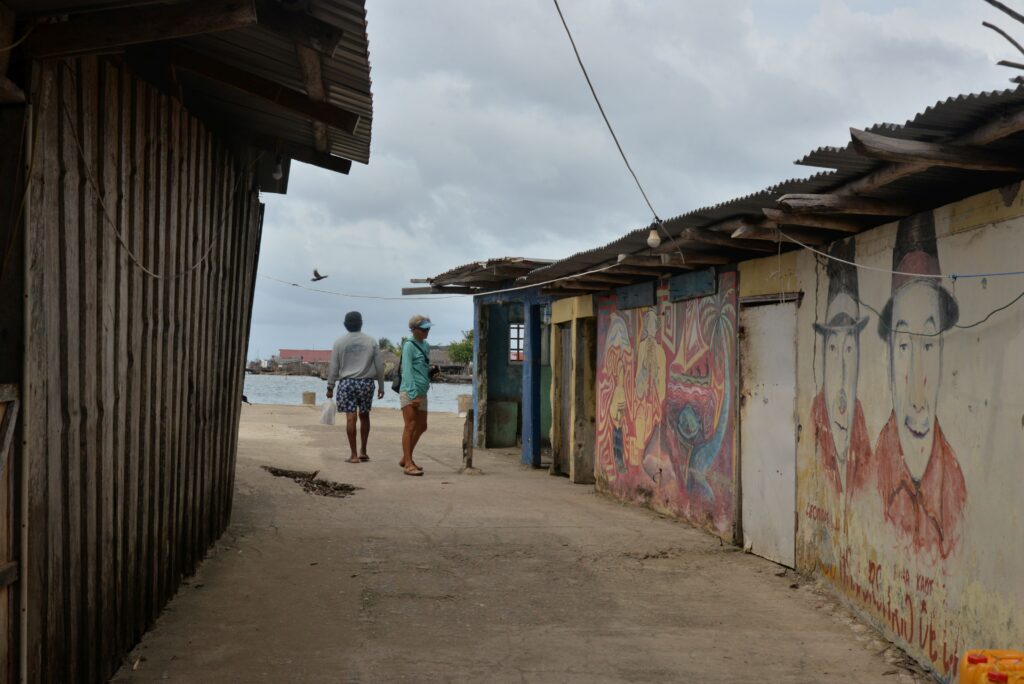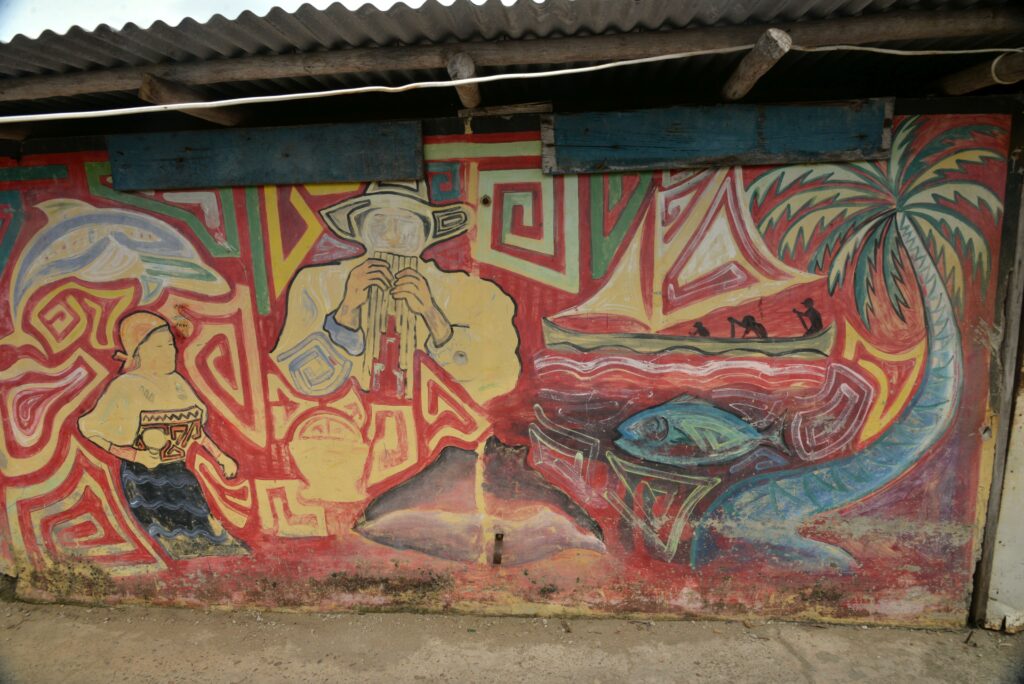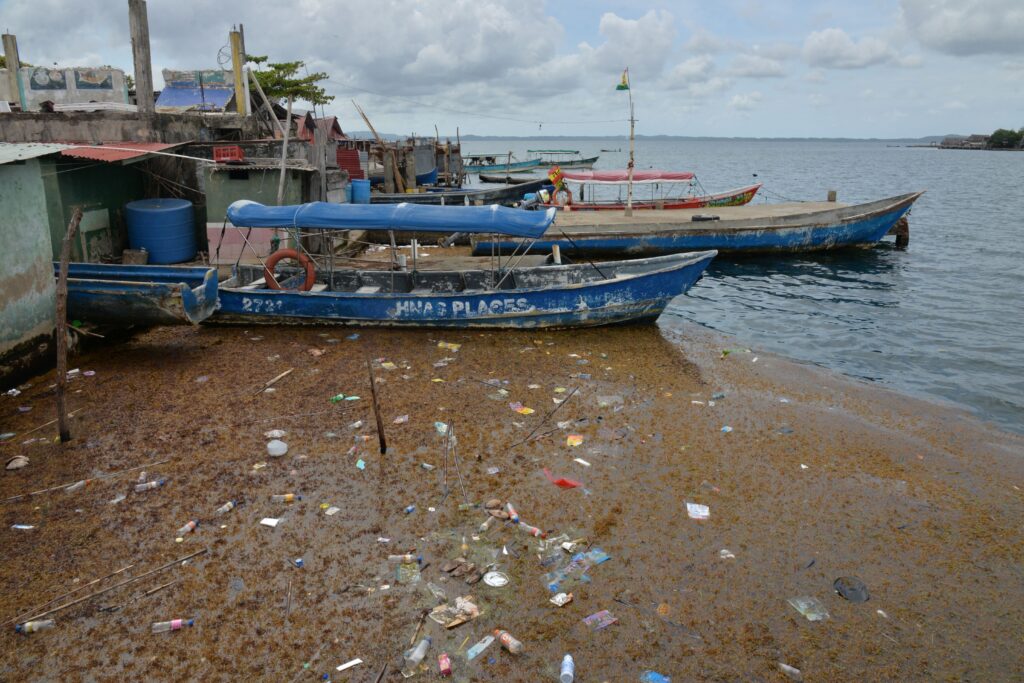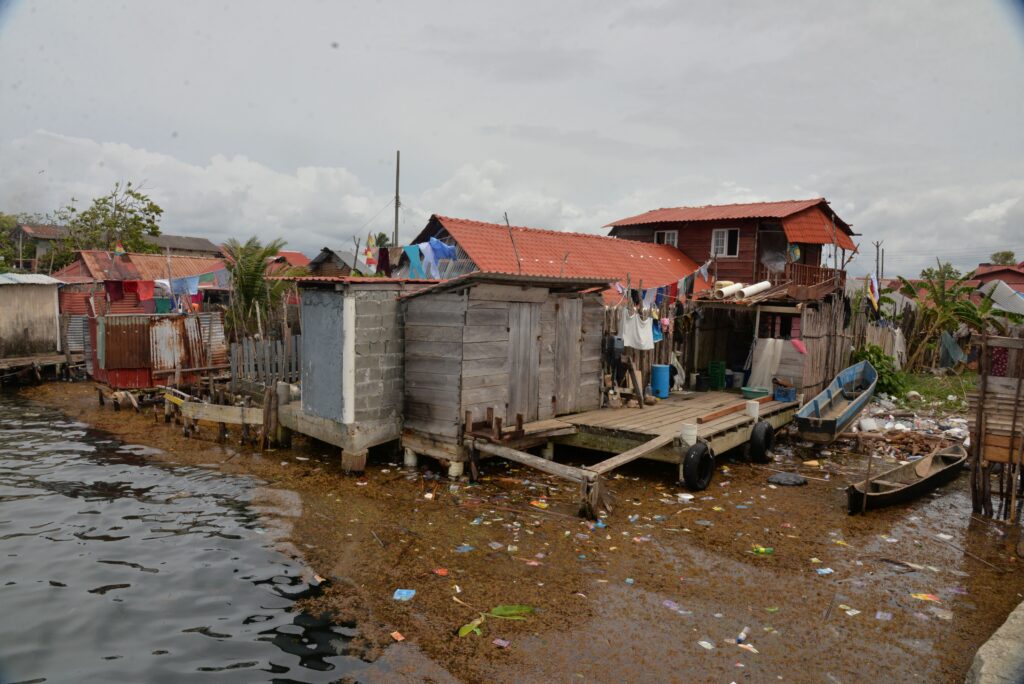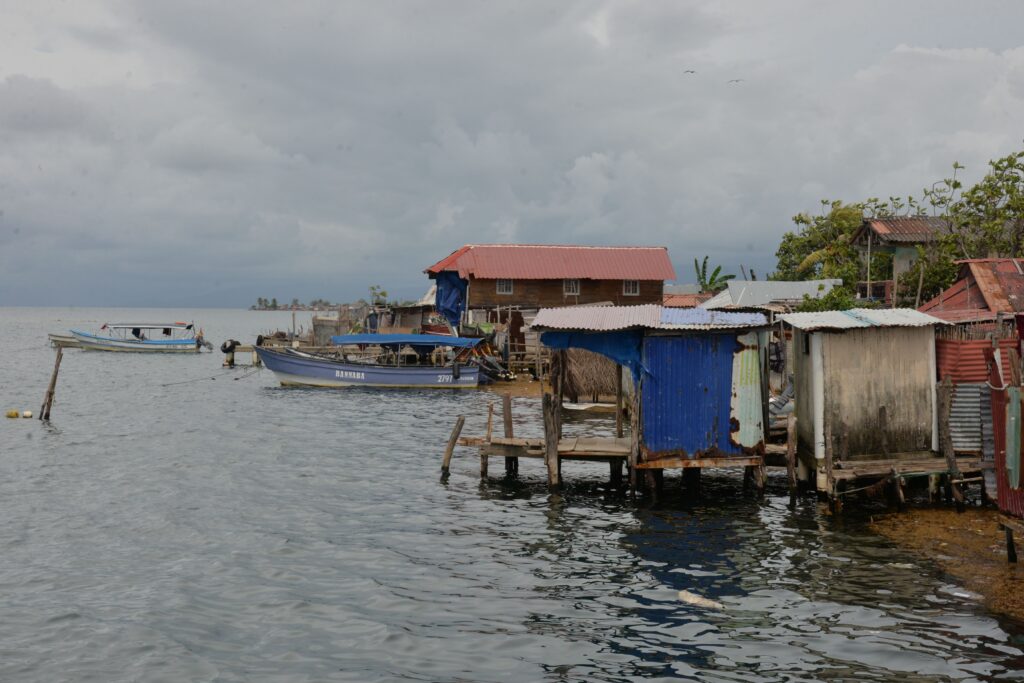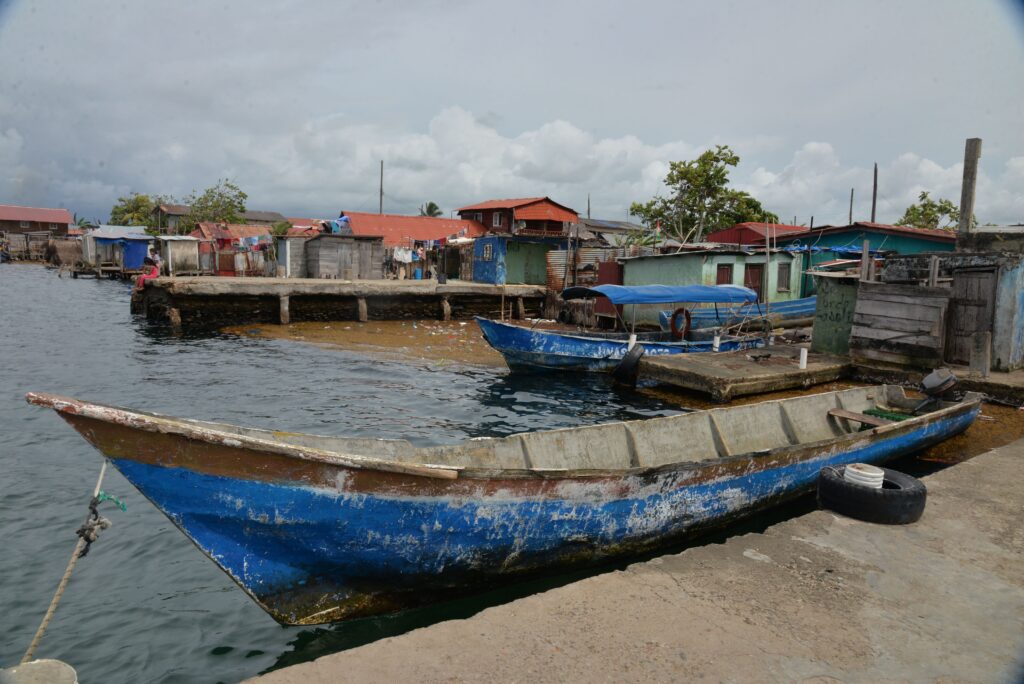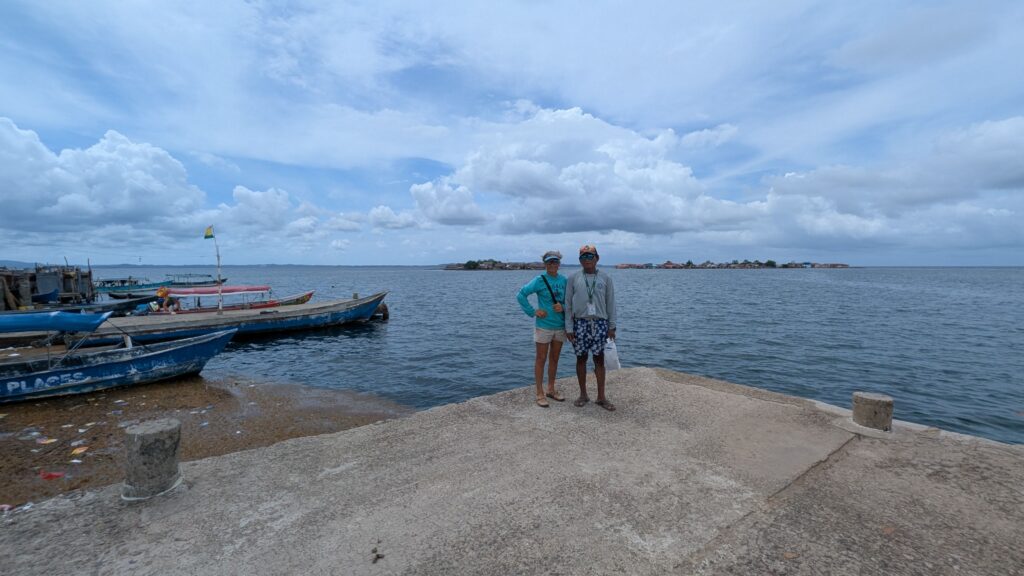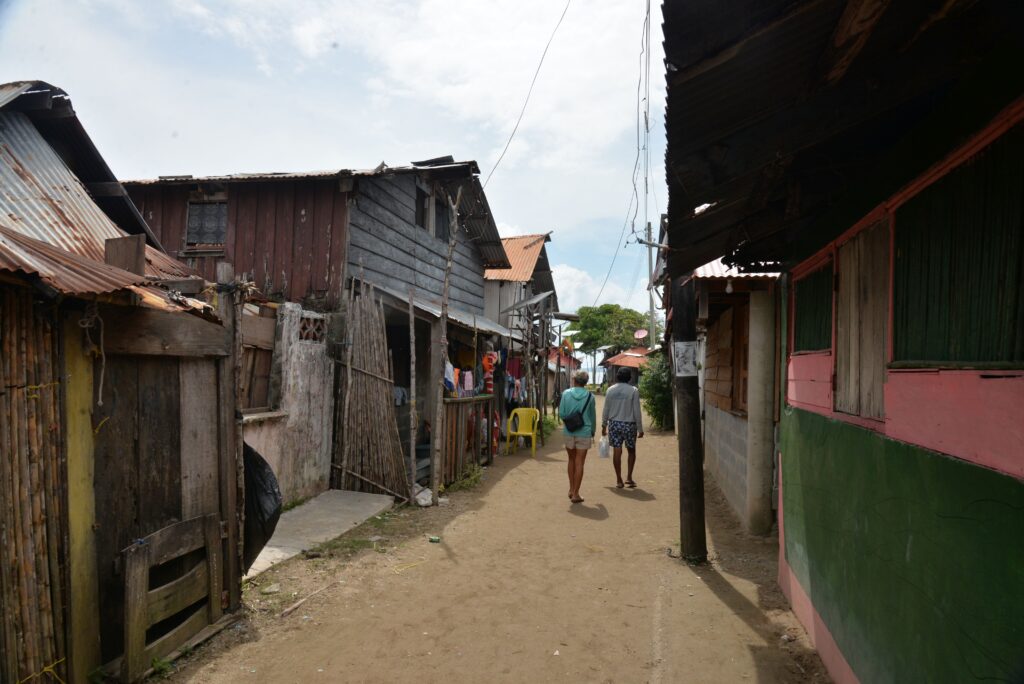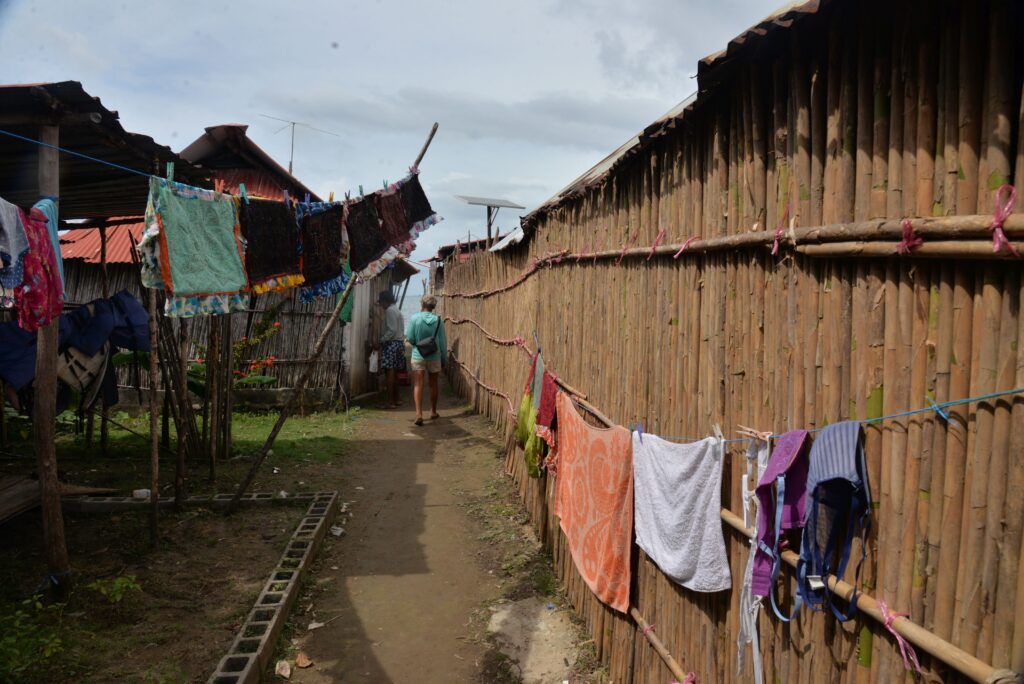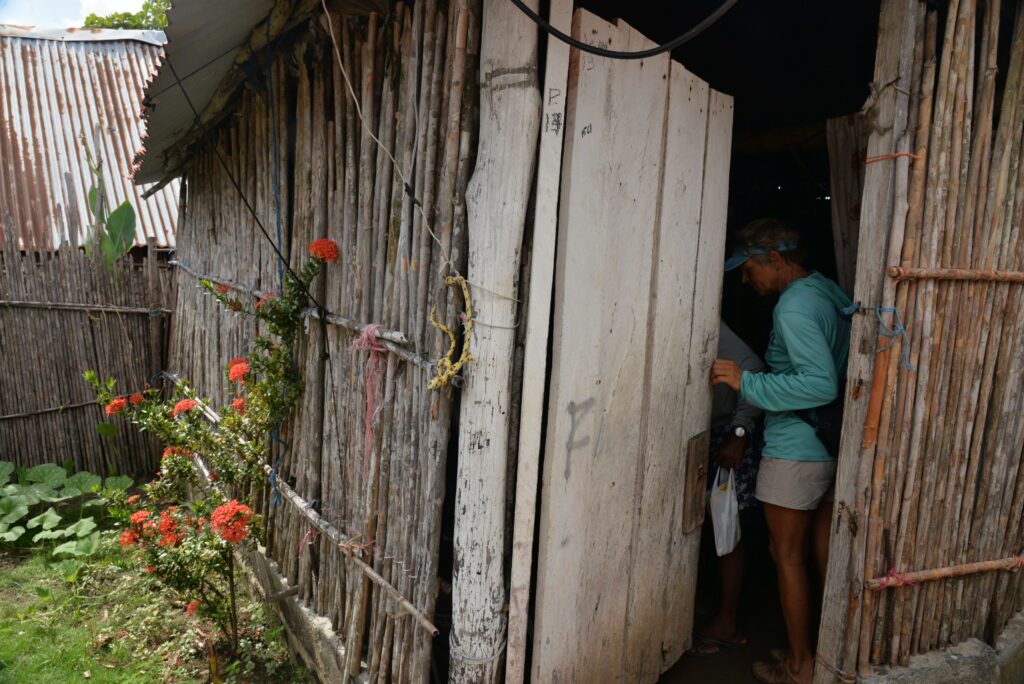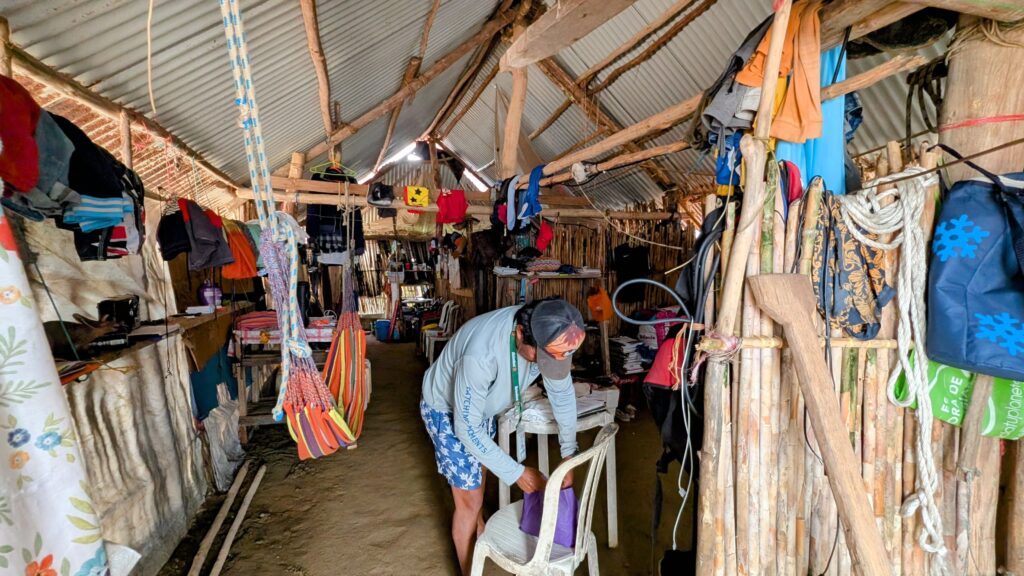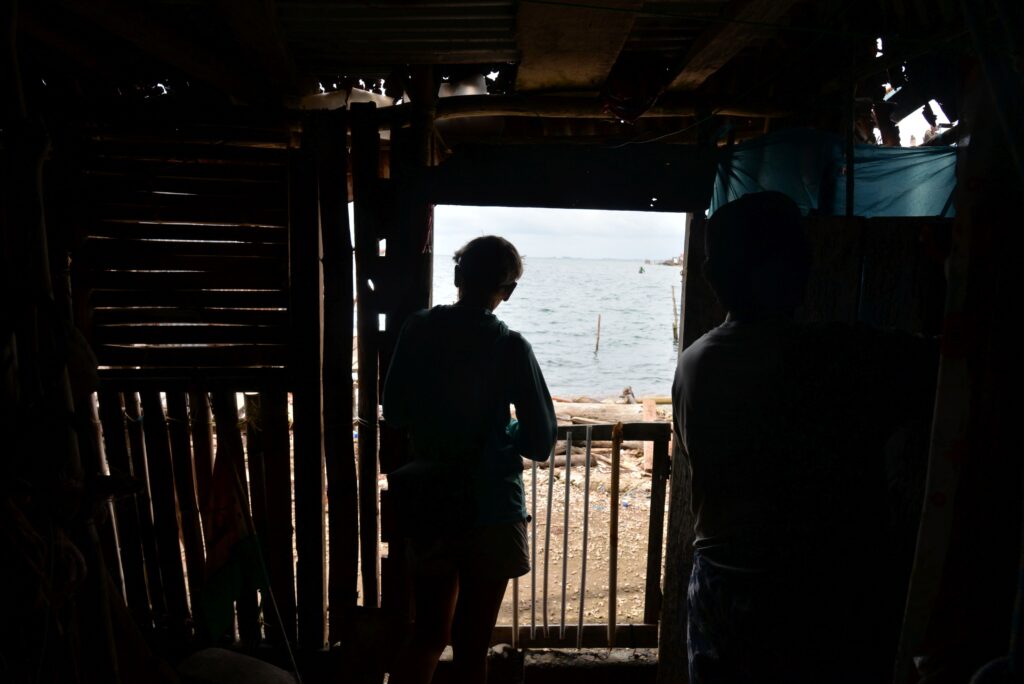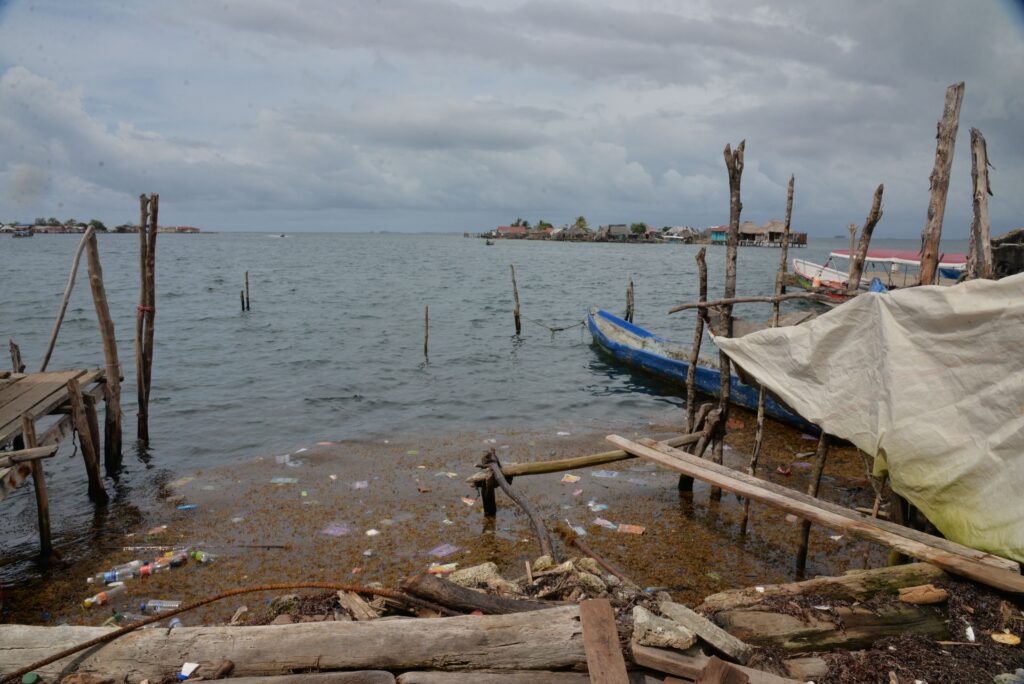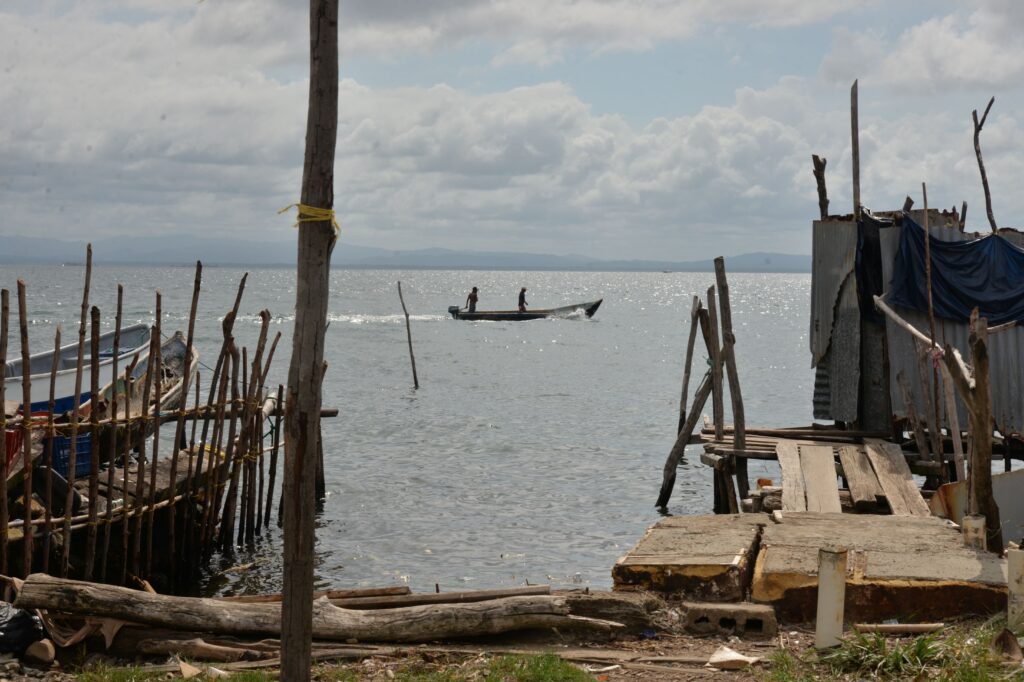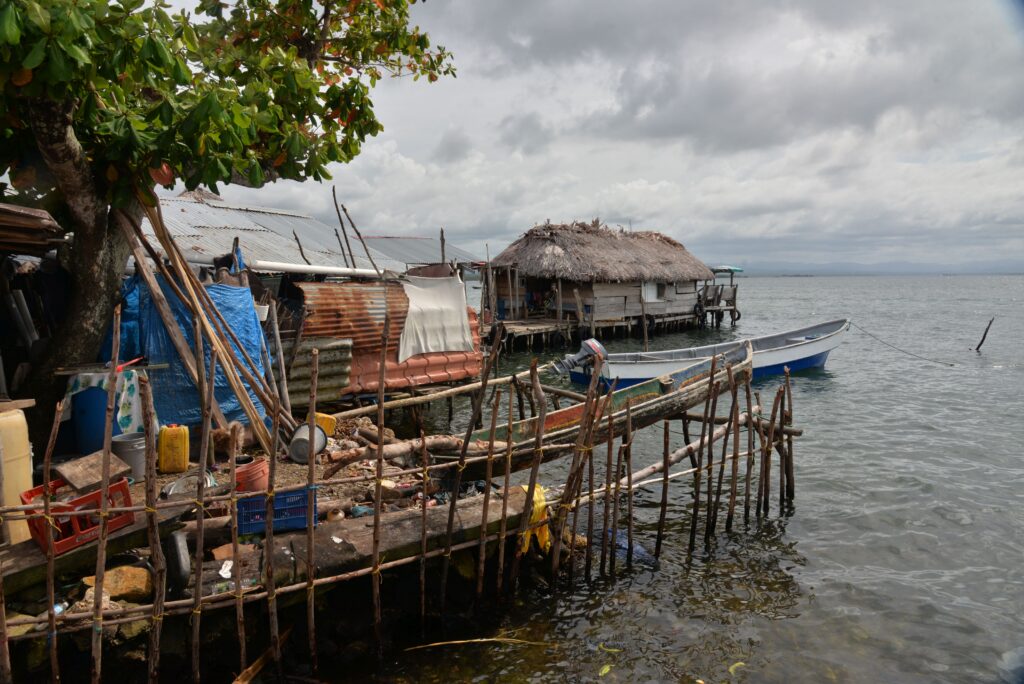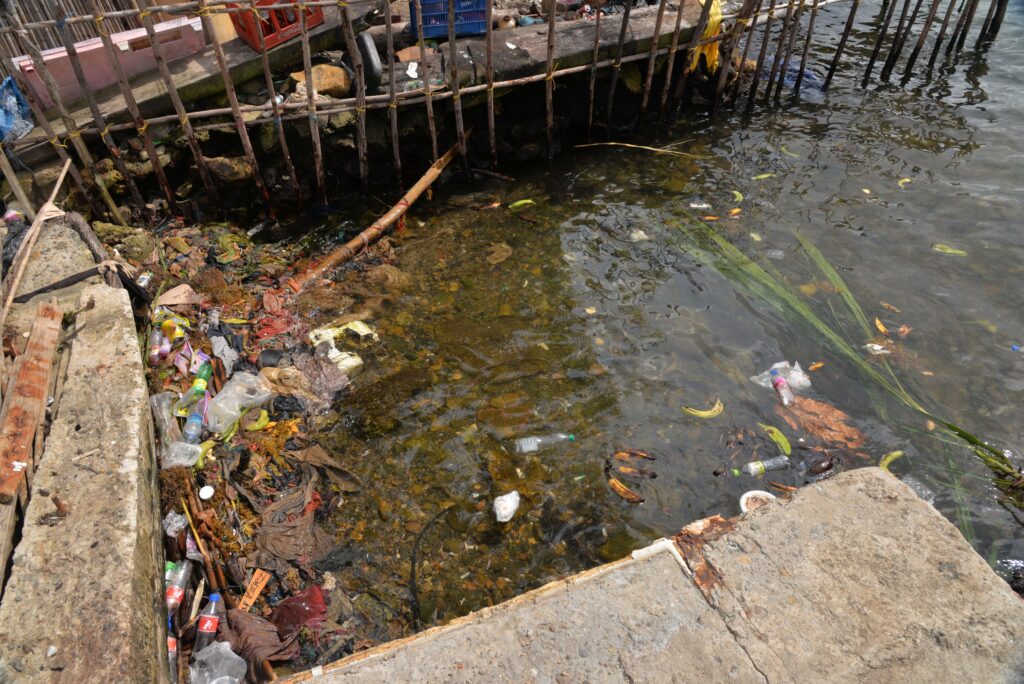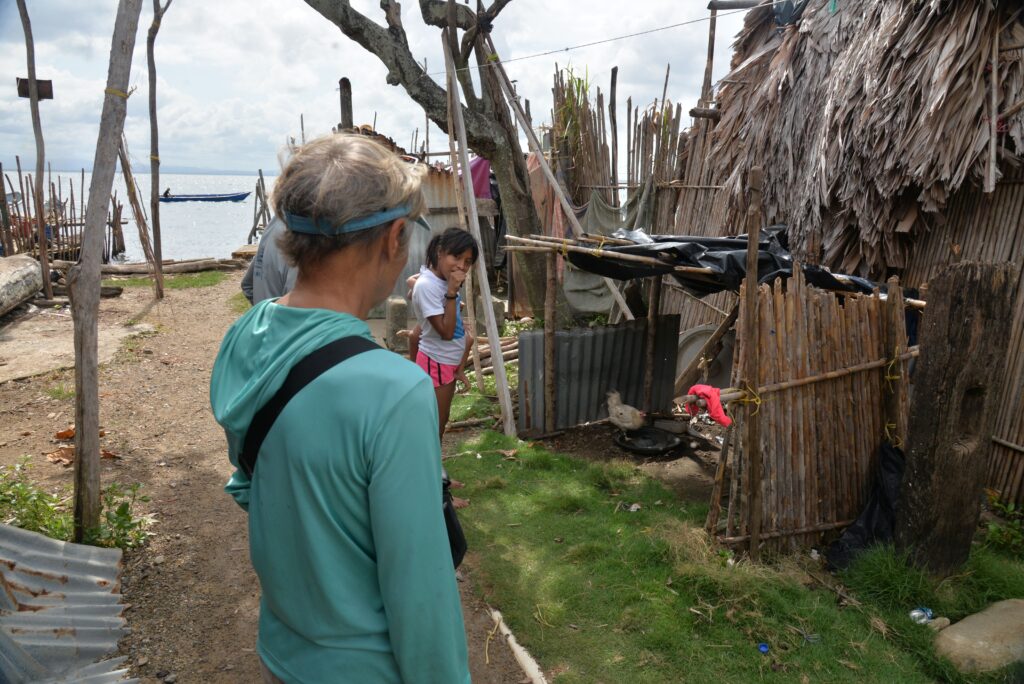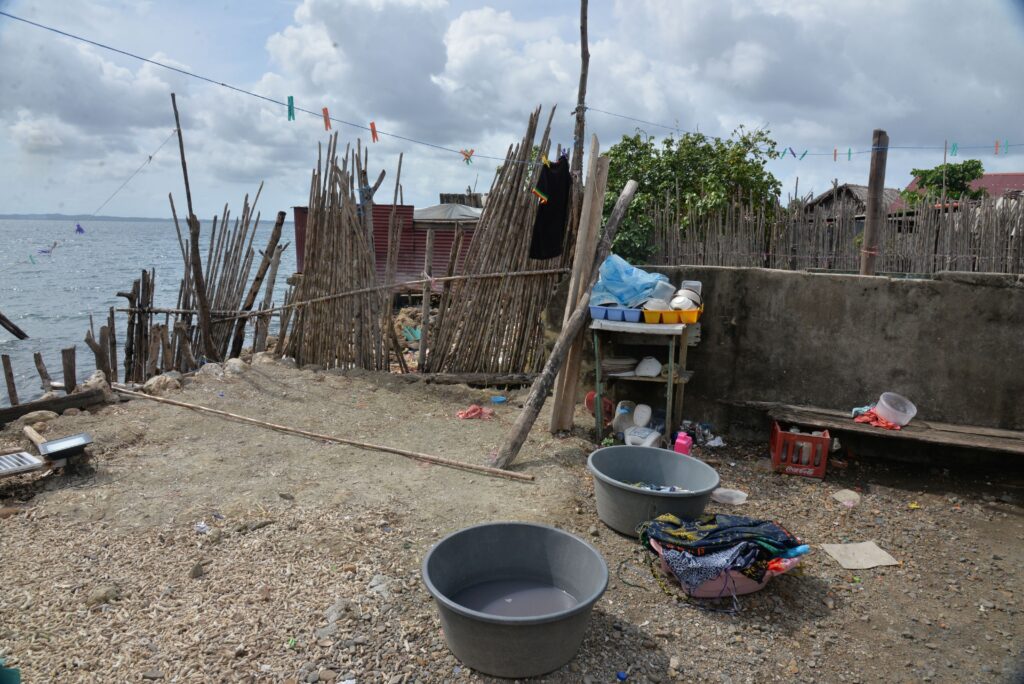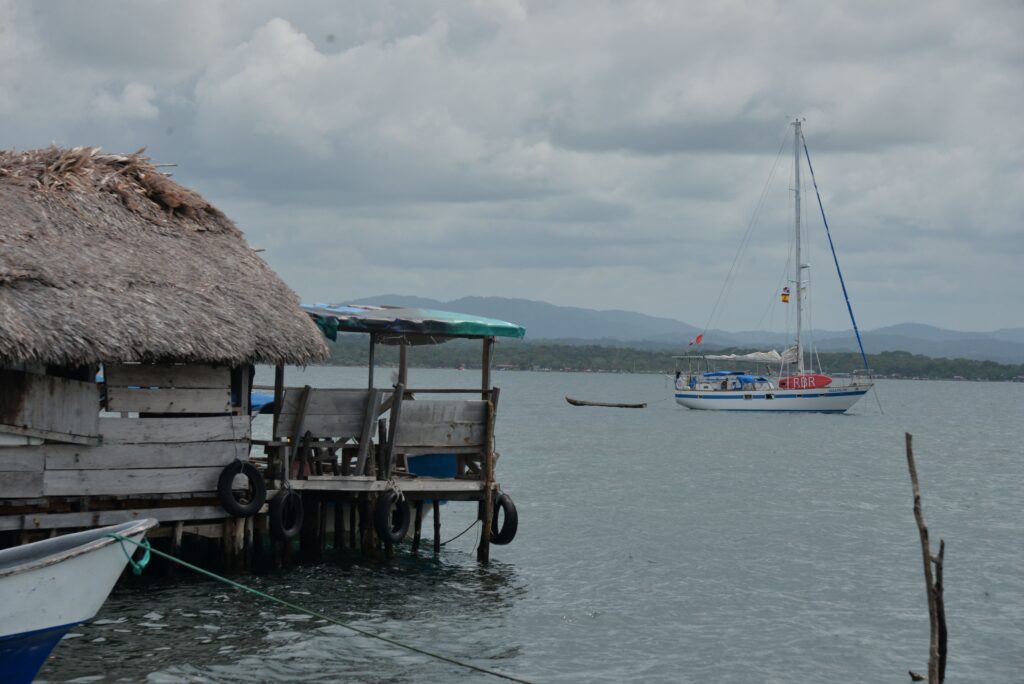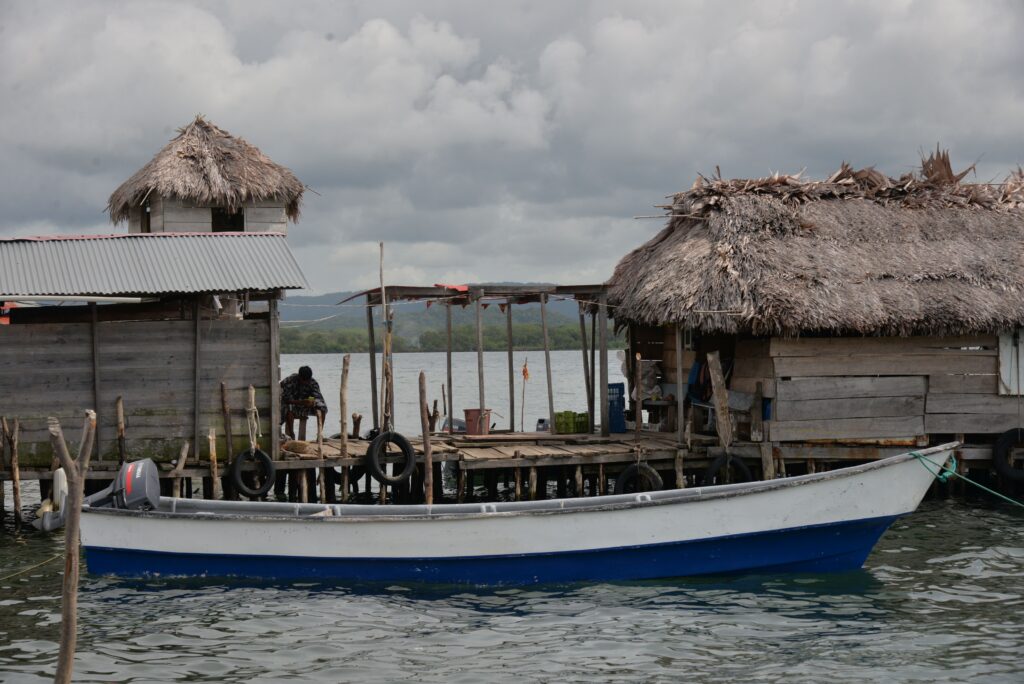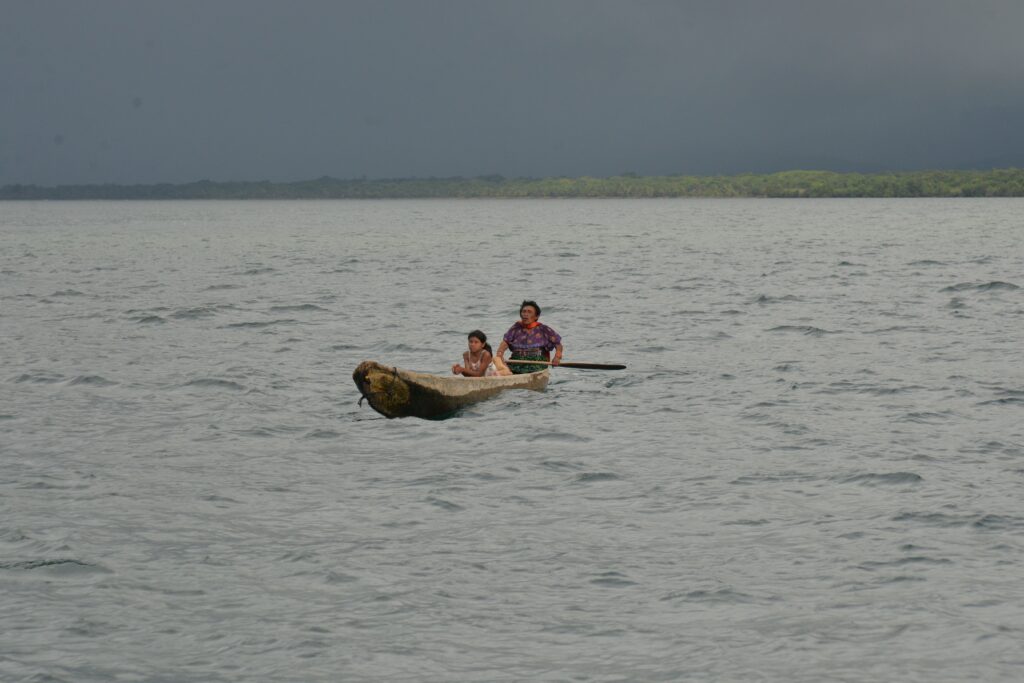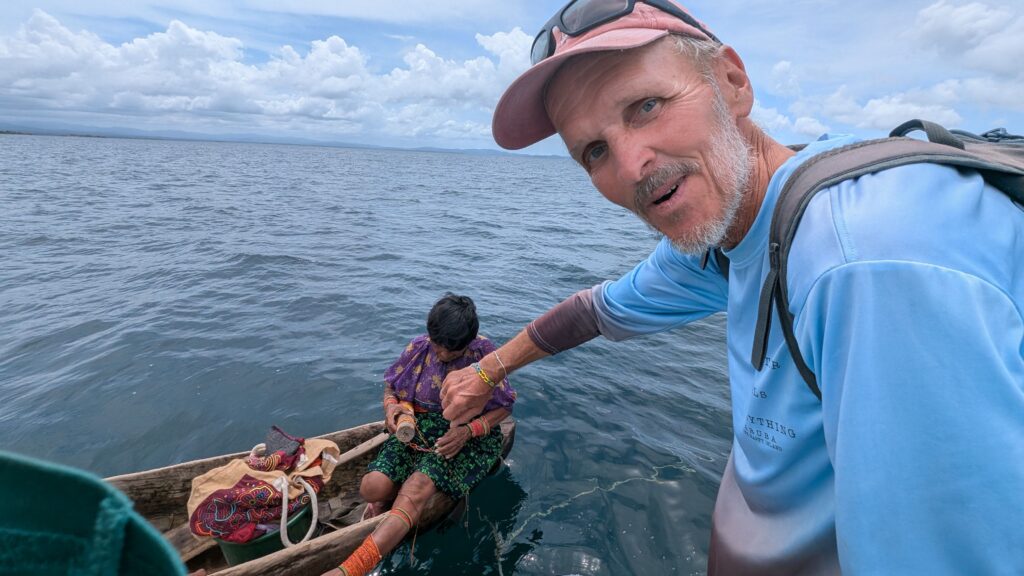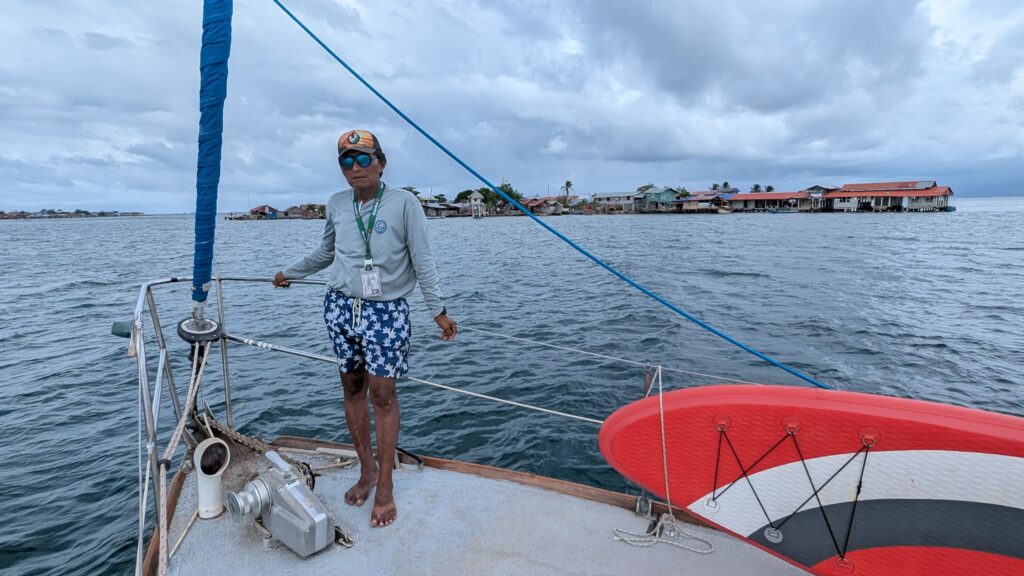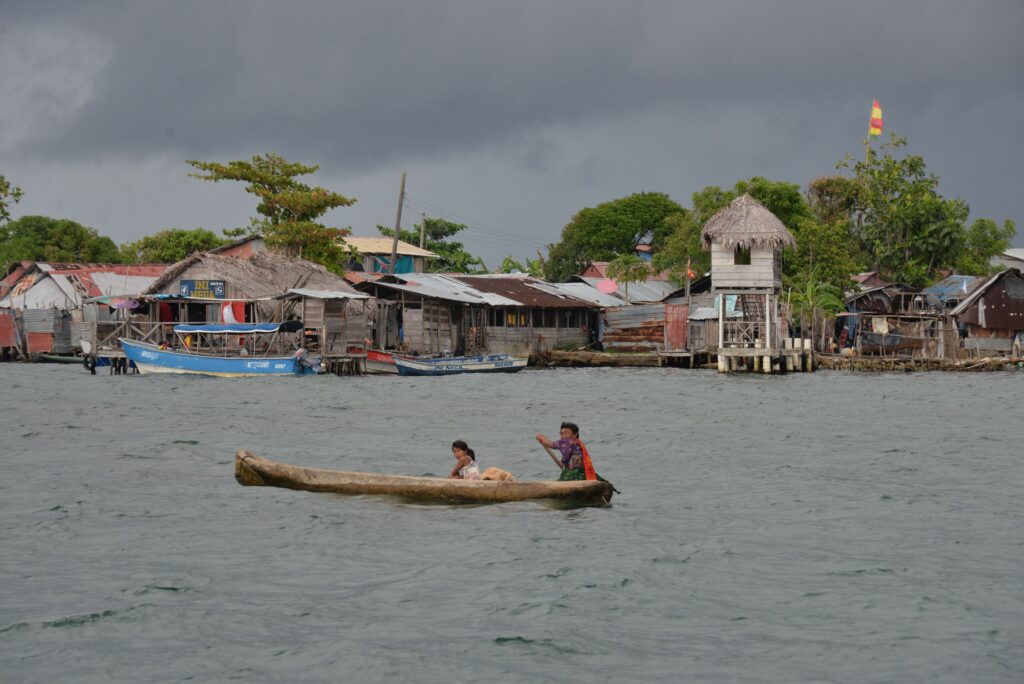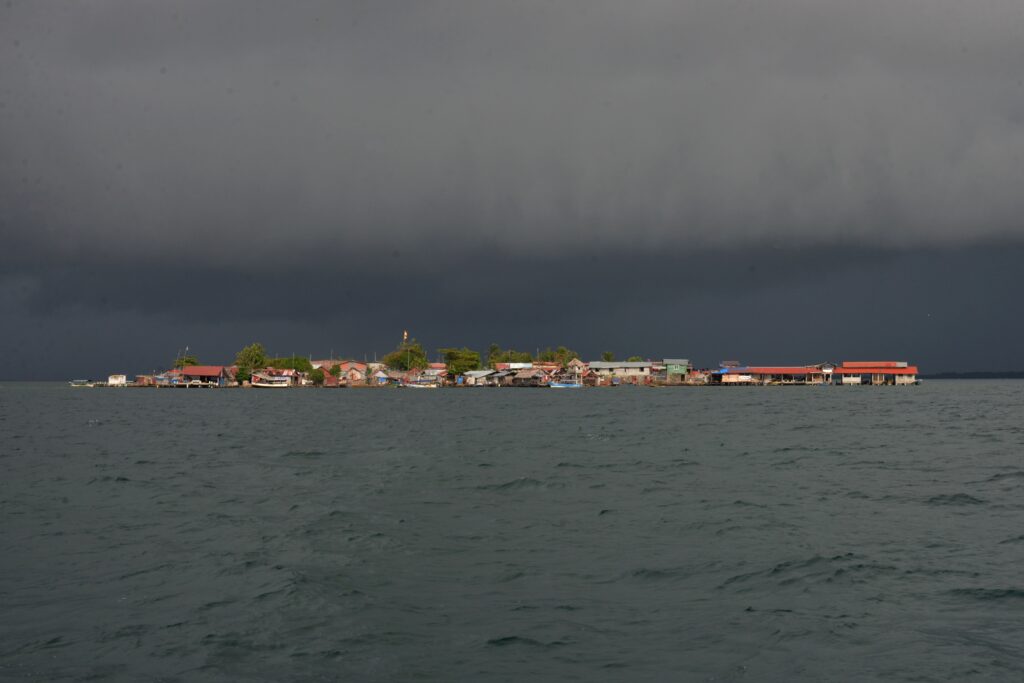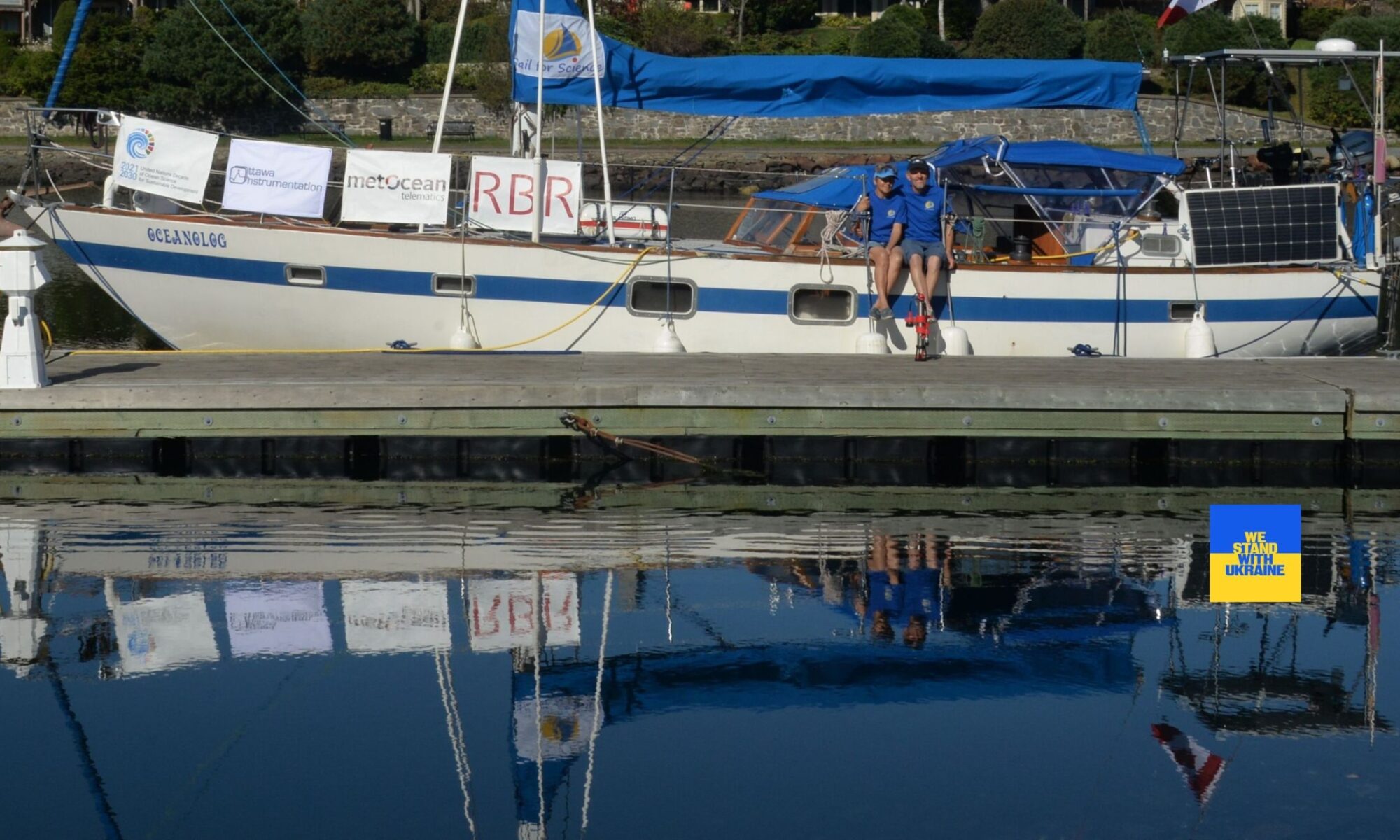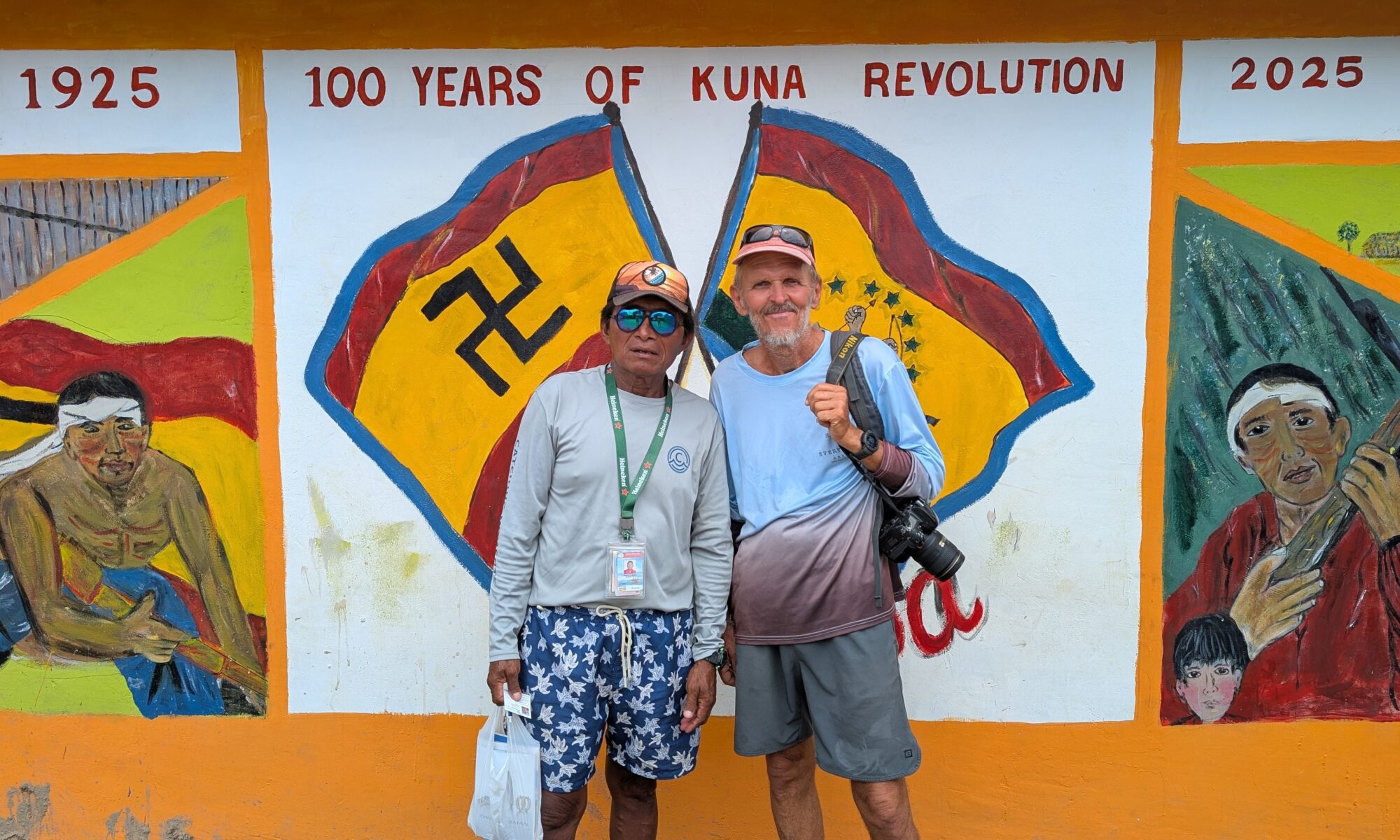No journey through the San Blas archipelago would be complete without a visit to Gardi Sugdub—a small island that recently made headlines around the world. Known as the first community in Panama to be officially resettled due to the impacts of climate change, Gardi Sugdub has become a symbol of both environmental vulnerability and resilience. Scientists predict that by 2050, rising sea levels will submerge around 63 island communities in Guna Yala, and as oceanographers, we felt a strong pull to witness the reality behind the headlines.
As we approached the island, a small boat glided toward us. A local man onboard waved, pointing carefully to a safe spot to drop anchor—navigating the shallow waters takes local knowledge. Once alongside, he introduced himself as Ernesto Perez, a licensed tour guide and port lecturer, flashing his official badge with a smile. It was serendipity: we couldn’t have hoped for a better guide to help us explore the life and lore of Guna Yala.
We hopped in our dinghy and made our way to shore, stepping into a village that was not unfamiliar in form—narrow sandy pathways, wooden huts closely packed together, and a rhythm of life that has endured for generations. This wasn’t our first visit to a Guna community, and while we had some sense of the lifestyle—marked by its resilience and simplicity—we were especially curious to see how sea-level rise was affecting this particular island.
To our surprise, we didn’t find dramatic signs of flooding or ocean incursion. When we asked locals about the reason for the relocation of over 300 families to a new mainland village, the answer was simple and surprising: overpopulation. The rising sea was not the primary concern, at least not for those who stayed behind. “We’ll raise the island if we have to,” one resident said, describing a local method of land reclamation: driving stakes into the shallow water and backfilling with coral, rocks, and, troublingly, garbage. It’s a DIY form of resilience—equal parts optimism and necessity.
But this “filling” technique has its darker side. The coastal waters around Gardi Sugdub are increasingly clogged with plastic waste—bottles, wrappers, and floating debris. It’s clear that plastic has become a silent invader, one that is just as dangerous to the island’s future as the encroaching sea. You can’t build a sustainable future on plastic. And it’s painfully ironic: the same plastic that promises convenience is undermining a centuries-old way of life. There are no cars on Gardi Sugdub, and even bicycles are impractical. The Guna way of life is rooted in simplicity, yet modern waste has found a way in.
The problem isn’t just the trash—it’s the system. Grocery stores on the island, limited in variety, are packed with single-use plastic items: tiny bottles of water, sodas, sauces, and juices. Once emptied, many of these containers end up in the sea. At best, some are burned in landfills, releasing toxins into the air. It’s a vicious cycle that can’t be solved by moving people alone.
Real support for the Guna communities must go beyond building model villages on the mainland. What’s needed is a combination of environmental education, waste management infrastructure, and programs that empower young people to care for their surroundings—through beach cleanups, recycling, and cultural renewal. With thoughtful planning, local commitment, and international support, the Guna people can remain stewards of their islands rather than victims of their fate.
So, to the people of Gardi Sugdub, we send our deepest respect. May you never drown in plastic, nor in bureaucracy. May your traditions thrive amid modern pressures. And may your island, whether on land or memory, remain a stronghold of Guna identity in a world that’s changing fast.
